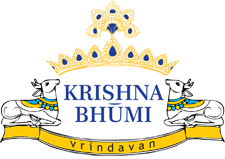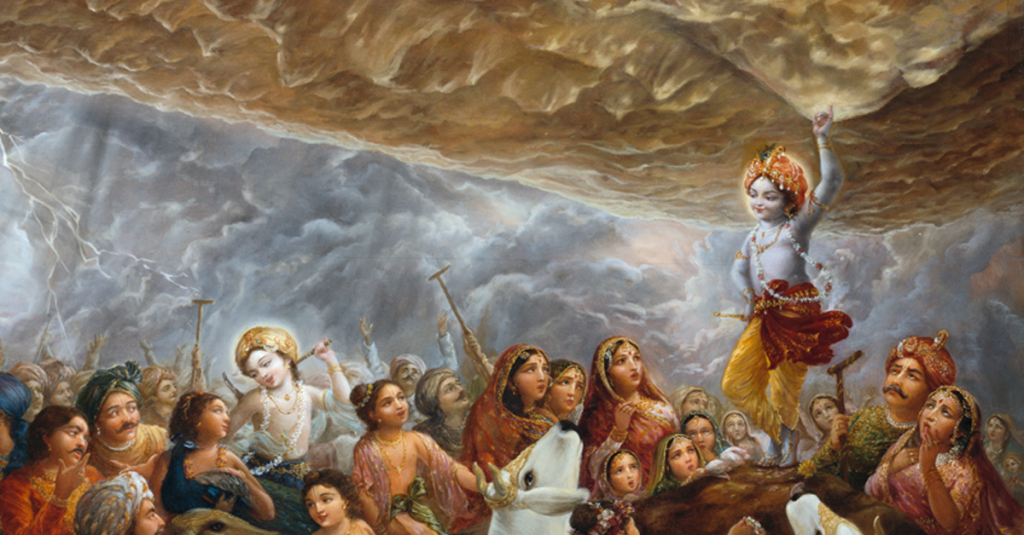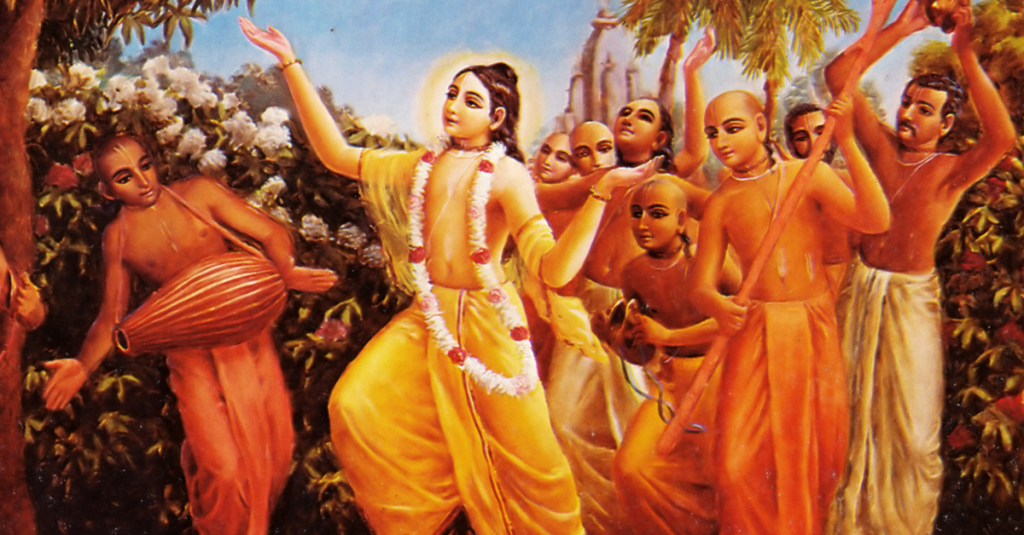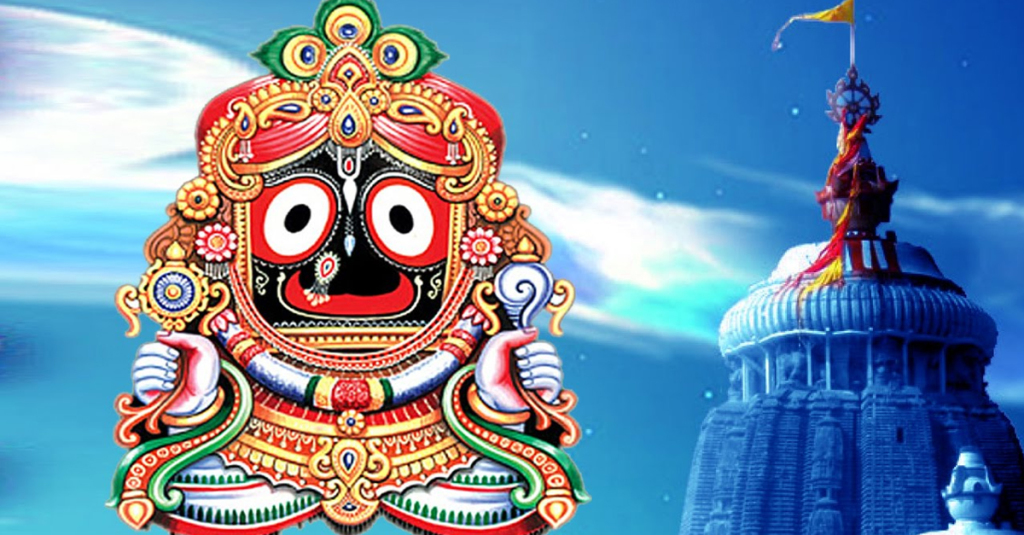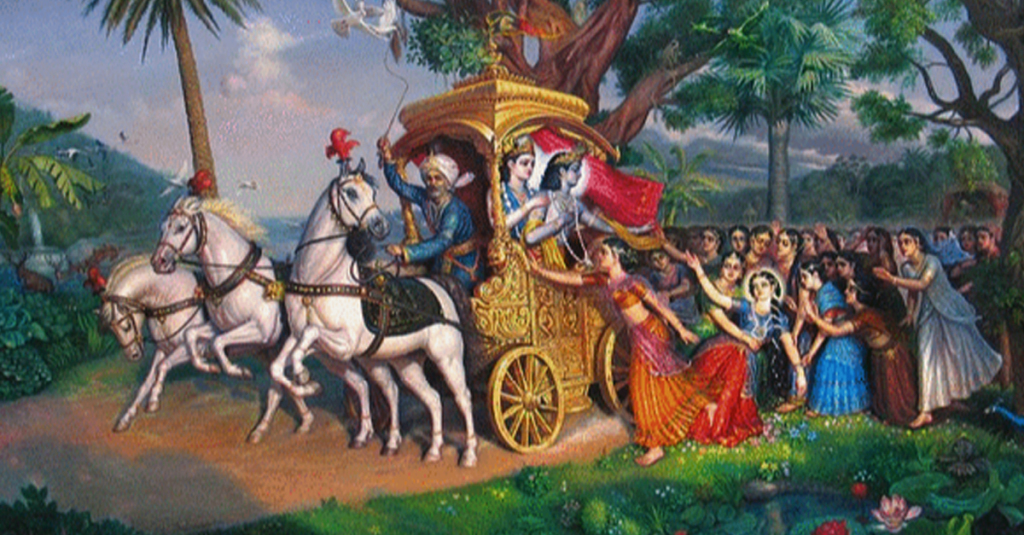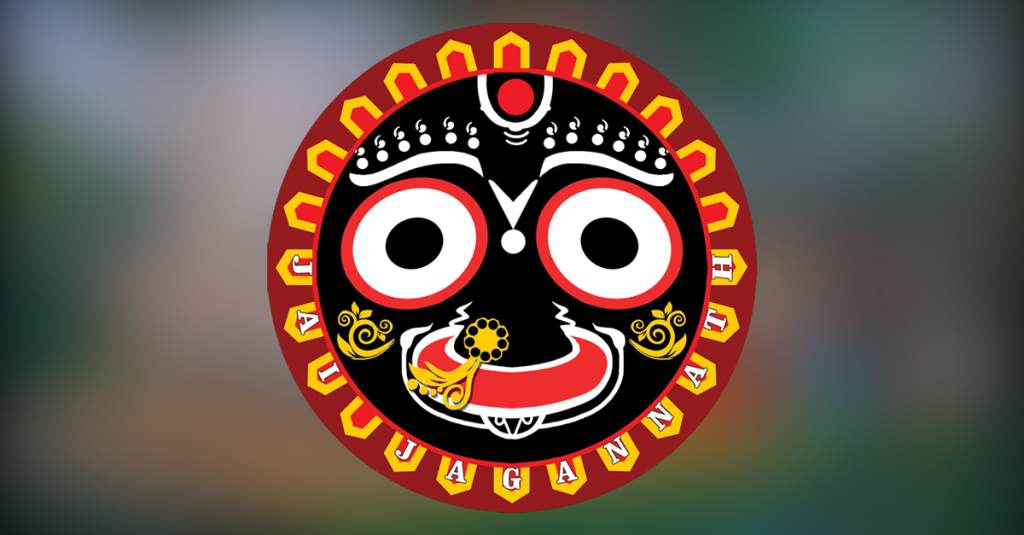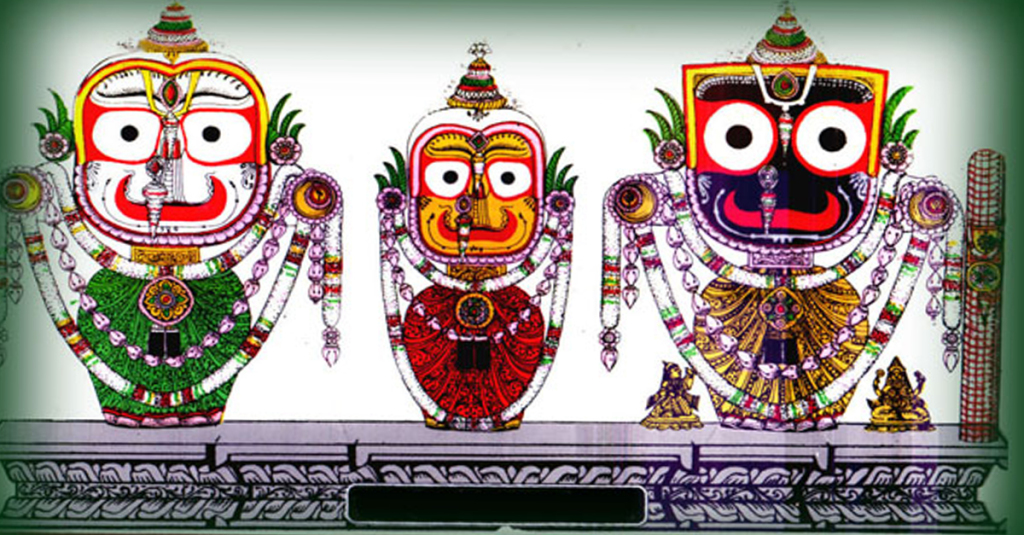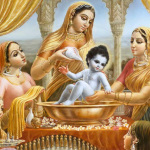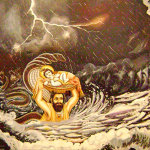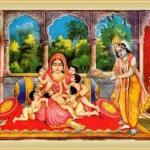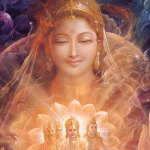Mudiya mela and Govardhan Parikrama: A way to reach out to Sri Krishna
The magic that pervades Sri Krishna’s Vrindavan, makes itself felt in every aspect of the holy Braj. Every day here is an opportunity to devote oneself to Sri Krishna and every festival here is an occasion to celebrate love for Brijwasi’s beloved Kanhaiya. Mudiya Mela is no exception. Known as the ‘Mini Kumbh’, Mudiya Mela attracts thousands of devotees every year who participate in this weeklong celebration and perform various rituals including the Govardhan Parikrama. This year, the mela is being celebrated from July 22 to 29.
Govardhan Parikrama: A parikrama to attain spiritual rejuvenation
The Dandavat Parikrama is one of the most challenging parikramas, calling for a lot of strength, patience, and endurance. This is because the rituals entail that the devotees perform 17,300 dandavats to complete one parikrama. They stretch out on the ground and stand up 17,300 times to worship the Giriraj Hill, the Govardhan Mountain.
Circumambulation of the Govardhan Hill means a Parikrama of approximately 14 miles. Before they start the parikrama, devotees take a holy dip in the beautiful Manasi Ganga Lake. Although the dandavat parikrama is one of the most physically challenging tasks, it is the love for Sri Krishna and the unswerving faith in Him that instills strength in the hearts of thousands of devotees who perform the parikrama year after year. Though there is no limit for performing the ritual, some may take weeks and sometimes even months to complete the parikrama. However, some may even be able to complete it in six hours, if they perform the circumambulation at a brisk pace. These days, the UP Department of Tourism has introduced a helicopter parikrama that lets devotees perform an aerial parikrama of Govardhan Parvat in just 10 minutes.
Govardhan Parikrama: A tradition through the ages
The story of Sri Krishna lifting the Govardhan Parvat to protect the Brijwasis from the rage of Indra and the consequent flood, is one of the most well-known legends. The Srimad Bhagavatam states that Sri Krishna ordered all the people of Braj worship Govardhan Hill. Circumambulating the hill formed an integral part of the worship. This was the way in which the gopas and gopis pleased Sri Krishna.
Many great souls performed Govardhan parikrama when they visited Vrindavan. This includes Sri Chaitanya Mahaprabhu who considered the rocks on the Govardhan as non-different from the body of Sri Krishna. Many acharyas and goswamis made Govardhan parikrama an intrinsic part of their devotion and service to Sri Krishna. A.C. Bhaktivedanta Swami Prabhupada, the founder acharya of ISKCON wanted his followers to fulfil his last desire which was to take him on a Govardhan parikrama.
Being a part of all the beautiful festivals and pujas of the Braj becomes so much easier when you have a home in Vrindavan. Become a Krishnabhumi Holydays member and experience the holy Braj like never before.
Radhe Radhe!
Why Vrindavan Celebrates Jagannath Rath Yatra?
Rath Yatra, the Festival of Chariots, is celebrated for many years in Puri with grandeur, enthusiasm, fanfare, elaboration and religious fervour. In Vrindavan, simplicity sets the tone for this auspicious day. If you are in Vrindavan during Rath Yatra, you can be a part of a wonderful experience when the beautiful chariots come out in the streets in a lavish procession, from the many temples here. The experience is delightful when these chariots circumambulate Gyan Gudri. The major attractions are the chariots from the three ancient temples of Gopinath, Govinda and Madan Mohan and also the temples at Jagannath Ghat, Vishram Ghat and Sadhu Mai Ka Ashram.
It’s not simply about Rath Yatra celebration in Vrindavan. There is more to the story than it meets the eyes. Many people are unaware of the meaning of Rath Yatra and its significance in Vrindavan. Do you know why all the chariots meet at Gyan Gudri? Let us tell you this beautiful story.
Deity of Jagannath Placed in the Empty Temples
We spoke to many scholars and acharyas who narrated the story behind Rath Yatra in the holy Vraj. According to them, after the Mughal emperor Aurangzeb raided Vrindavan, the idols of Gopinath, Madan Mohan and Govinda were moved to India’s Pink City, Jaipur. As a result, the original temples had no deity. And so the acharyas of that period decided to place the idols of Jagannath in those empty temples.
Once the new temples of Gopinath, Madan Mohan and Govinda were built and the replicas placed, Lord Jagannath’s deity was also set up in the new temples. Since the idol of Jagannath was in the temple, it was necessary to take the Lord out on Rath Yatra. According to the archaryas, the ideal place for Rath Yatra was Gyan Gudri, where Sri Uddhava, one of Shri Krishna’s disciples, heard about the Divine love from the Vraja Gopis or damsels.
Shri Krishna and Balaram Move to Mathura
Lord Krishna’s Rath Yatra is also held in Vrindavan along with Jagannath. This festival is related to the Gopis’ divine love for Devakinandan. Shri Krishna rode a chariot for the very first time in the holy land of Vrindavan. This chariot was sent by Krishna’s uncle King Kamsa to transfer Devakinandan and Balaram to Mathura.
Krishna Takes Jagannath’s Form
The separation from Vrindavan made Krishna take Jagannath’s form. The Utkala Khanda of the Skanda Purana tells the story of Krishna’s manifestation as Jagannath. During a solar eclipse, Devakinandan, Balaram, Subhadra and Dwarka’s other residents went to take a holy dip in a pond at Kurukshetra. Lord Krishna’s parents Nanda and Yashoda, Radha and the other residents of Vrindavan were burning due to the separation from Hari, another name for the Lord. Knowing about Shri Krishna’s whereabouts, they all went to meet Devakinandan. Balaram’s mother Rohini Ma spoke to Krishna’s wives in Dwarka about His favourite pastimes in Vrindavan and the Gopi’s divine love for Him. Rohini’s narrative was kept exceedingly confidential. That’s why she posted Subhadra near the door so that no one could enter the premises. Realising that Rohini Ma was talking about Him, Devakinandan and Balaram came close to the door, standing on Subhadra’s left and right sides. Lord Krishna stood listening along with Balaram.
Hearing of these stories, Devakinandan was overcome with strong feelings of separation from the holy land of Vrindavan. Shri Krishna was so fascinated hearing about His pastimes in Vrindavan that His heart started melting. Both Devakinandan and Balaram were so overjoyed that their inner feelings manifested outwardly. Their eyes were dilated, heads pressed together into their bodies and their limbs drawn back. Witnessing these physical transformations in Krishna and Balaram, Subhadra too felt euphoric and took the same form. After hearing about Krishna’s pastime in Vrindavan, Devakinandan and Balaram with Subhadra in the middle unveiled their ecstatic form and it is this form that is worshipped as Lord Jagannath, Balaram, and Subhadra in Puri.
Krishna, Balaram and Subhadra in their Special Forms
After Shri Krishna, Jagannath and Subhadra returned to their normal forms, and Devakinandan recovered completely, Krishna realised that it was Narada’s trick because he planted the idea in Rohini’s mind to narrate the story of Krishna’s pastime in Vrindavan. Though Narada Muni thought that his doing will make Krishna angry, but to Narada’s relief, Shri Krishna was pleased with him. In fact, the Lord wanted to shower His blessings on Narada Muni. Narada prayed to Krishna, Balaram and Subhadra to appear in those forms at some place in the world to give Darshan to their devotees. The special form is also called ‘Patita Pavana’, the rescuer of the fallen and liberator of the universe. This is why Shri Krishna welcomed Narada’s wish to give Darshan to His devotees as ‘Jagannath’ in Puri.
The separation of Shri Krishna from Vrindavan made Him take Lord Jagannath’s form. Though we associate Rath Yatra with Puri, the holy festival has its roots deeply seated in Vrindavan, where Shri Krishna had His favourite pastimes.
Come, be a part of this holy land and experience the magic called Vrindavan through a Krishnabhumi Holydays membership.
Radhe Radhe!
Visit these top 5 Hindu pilgrimage sites with a Krishna Bhumi Holydays membership
Tirth-yatra or a journey to places of religious significance has always been an integral part of the Indian culture. While spiritual tourism has witnessed a resurgence in the recent past, India has always known and nurtured such a quest. If you feel inspired to take a journey that will lead to spiritual elevation, consider becoming a Krishnabhumi Holydays member which not only lets you spend 7 blissful days in Vrindavan but also gives you the opportunity to visit hundreds of pilgrimage sites through RCI exchange. You also get 35% discount on RCI Exchange fees when visiting pilgrimage locations in India.
Here is a list of five locations that hold a special significance among Hindus. Begin your journey by visiting these places that attract millions of devotees every year.
Ramanathaswamy temple, Rameswaram
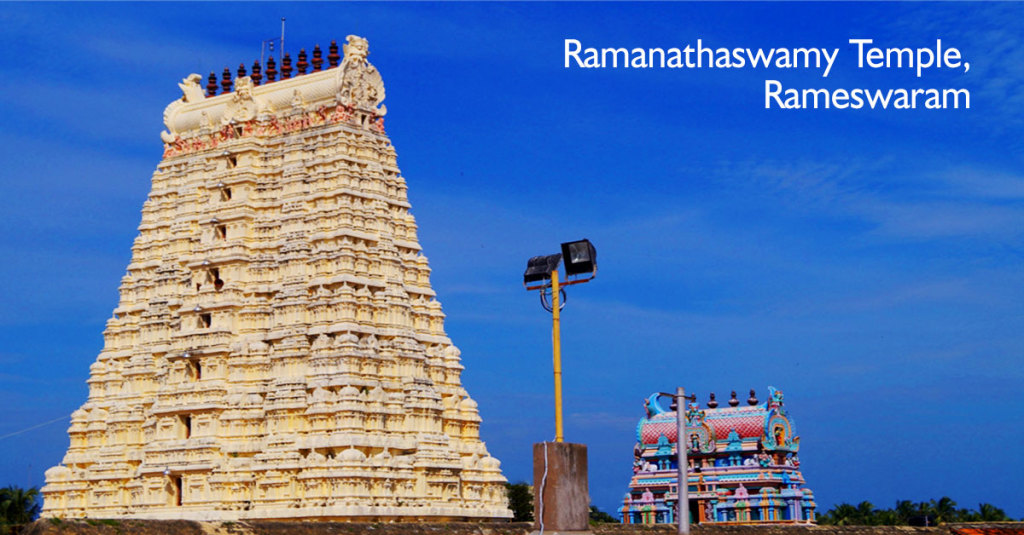 On Rameswaram island in Tamil Nadu, stands the beautiful Ramanathaswamy temple, one of the twelve Jyotirlinga temples. Legend has it that the Shiva lingam of this temple was established and worshipped by Sri Ram. According to the ‘yudha kanda’ of Valmiki’s Ramayana, after the battle with Ravana, it was here that Sri Ram prayed to Shiva to absolve any sins that He might have committed during the war and especially the sin of Brahmahatya that He committed for killing Ravana. However, in order to worship Shiva, Sri Ram wanted a lingam and sent Hanuman to bring it from the Himalayas. However, since Hanuman was late, Ram’s wife Sita created a lingam with the sands of the shore. It is believed that it is this lingam that is still there in the inner sanctum of the temple.
On Rameswaram island in Tamil Nadu, stands the beautiful Ramanathaswamy temple, one of the twelve Jyotirlinga temples. Legend has it that the Shiva lingam of this temple was established and worshipped by Sri Ram. According to the ‘yudha kanda’ of Valmiki’s Ramayana, after the battle with Ravana, it was here that Sri Ram prayed to Shiva to absolve any sins that He might have committed during the war and especially the sin of Brahmahatya that He committed for killing Ravana. However, in order to worship Shiva, Sri Ram wanted a lingam and sent Hanuman to bring it from the Himalayas. However, since Hanuman was late, Ram’s wife Sita created a lingam with the sands of the shore. It is believed that it is this lingam that is still there in the inner sanctum of the temple.
Shree Jagannath Temple, Puri
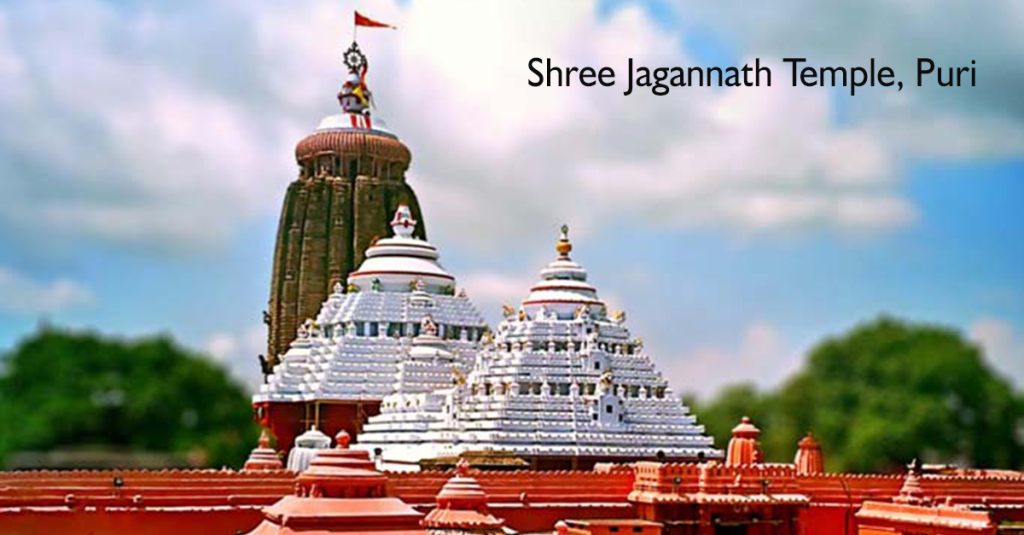 This 11th-century temple is one of the char dhams, the four pilgrimage sites that many Hindus want to visit at least once during their lifetime. There are many stories regarding the origin of the temple. According to one story, Sri Jagannath manifested Himself in the form of Indranila Mani or the Blue Jewel. However, so dazzling was the ‘mani’ that it would grant instant ‘moksha’ to anyone who looked at it. Yama hid it. Later on, Lord Vishnu instructed King Indradyumna to establish the Jagannath Temple. Even today, many things happen surrounding the temple that science fails to explain. For example, the flag on the temple always flaps in the opposite direction to the wind, no bird or aeroplane flies above the temple, and the Sudarshan Chakra at the temple top always faces you, no matter from where you look at it.
This 11th-century temple is one of the char dhams, the four pilgrimage sites that many Hindus want to visit at least once during their lifetime. There are many stories regarding the origin of the temple. According to one story, Sri Jagannath manifested Himself in the form of Indranila Mani or the Blue Jewel. However, so dazzling was the ‘mani’ that it would grant instant ‘moksha’ to anyone who looked at it. Yama hid it. Later on, Lord Vishnu instructed King Indradyumna to establish the Jagannath Temple. Even today, many things happen surrounding the temple that science fails to explain. For example, the flag on the temple always flaps in the opposite direction to the wind, no bird or aeroplane flies above the temple, and the Sudarshan Chakra at the temple top always faces you, no matter from where you look at it.
Pushkar Lake, Ajmer
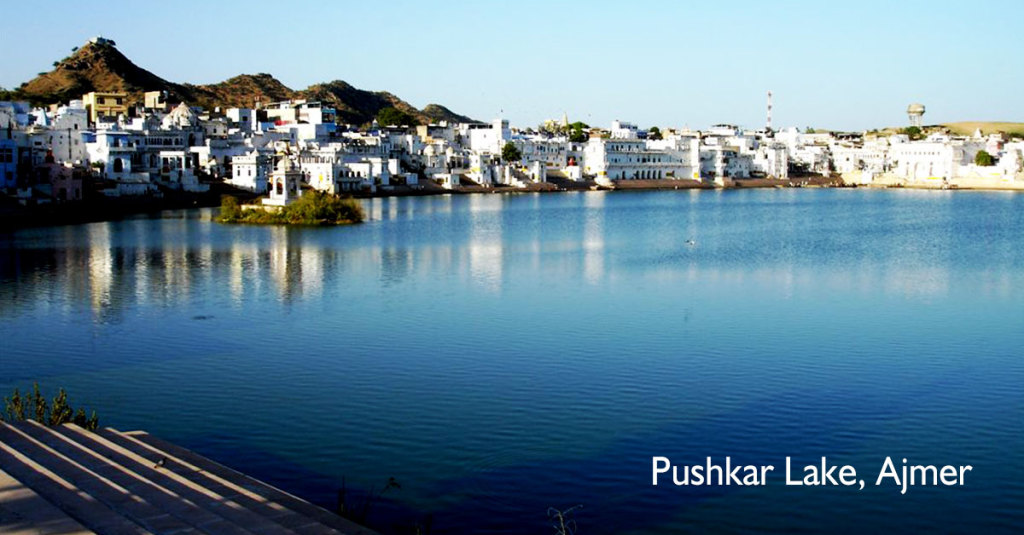 Pushkar Lake finds several mentions in the Ramayana, the Mahabharata, and several other Puranic texts. Pushkar comes from the words ‘pushpa’ meaning ‘flower’ and ‘kar’ meaning ‘hand’. It refers to the story of Lord Brahma that is behind the origin of this lake. Legend has it that Lord Brahma killed the demon Vajranabha with His lotus and while doing so, three petals fell on three spots. These three places transformed into three lakes— the Pushkar Lake, the Madya Pushkar Lake, and the Kanishta Pushkar Lake. Fifty two bathing ghats surround the lake. It is believed that the water of the Pushkar Sarovar has healing powers. The lake, which is regarded as ‘Adi Tirtha’ in the Ramayana and the Mahabharata, attracts devotees from all corners of the world because it is believed that a dip in the lake on Karthik Poornima equals the merit of performing yajnas for several centuries.
Pushkar Lake finds several mentions in the Ramayana, the Mahabharata, and several other Puranic texts. Pushkar comes from the words ‘pushpa’ meaning ‘flower’ and ‘kar’ meaning ‘hand’. It refers to the story of Lord Brahma that is behind the origin of this lake. Legend has it that Lord Brahma killed the demon Vajranabha with His lotus and while doing so, three petals fell on three spots. These three places transformed into three lakes— the Pushkar Lake, the Madya Pushkar Lake, and the Kanishta Pushkar Lake. Fifty two bathing ghats surround the lake. It is believed that the water of the Pushkar Sarovar has healing powers. The lake, which is regarded as ‘Adi Tirtha’ in the Ramayana and the Mahabharata, attracts devotees from all corners of the world because it is believed that a dip in the lake on Karthik Poornima equals the merit of performing yajnas for several centuries.
Har ki Pauri, Haridwar
 The Ganga aarti at Har ki Pauri is a sight that will resonate within you for years to come. Every evening, thousands of devotees gather at the ghat to witness the mesmerising aradhana. The Ganga aarti is performed in what is considered to be the most sacred part of Har ki Pauri— the Brahmakund. It is believed that after samudra manthan, when Garud was carrying the pitcher full of amrit, a few drops fell on the Brahmakund.
The Ganga aarti at Har ki Pauri is a sight that will resonate within you for years to come. Every evening, thousands of devotees gather at the ghat to witness the mesmerising aradhana. The Ganga aarti is performed in what is considered to be the most sacred part of Har ki Pauri— the Brahmakund. It is believed that after samudra manthan, when Garud was carrying the pitcher full of amrit, a few drops fell on the Brahmakund.
Kedarnath Temple, Kedarnath
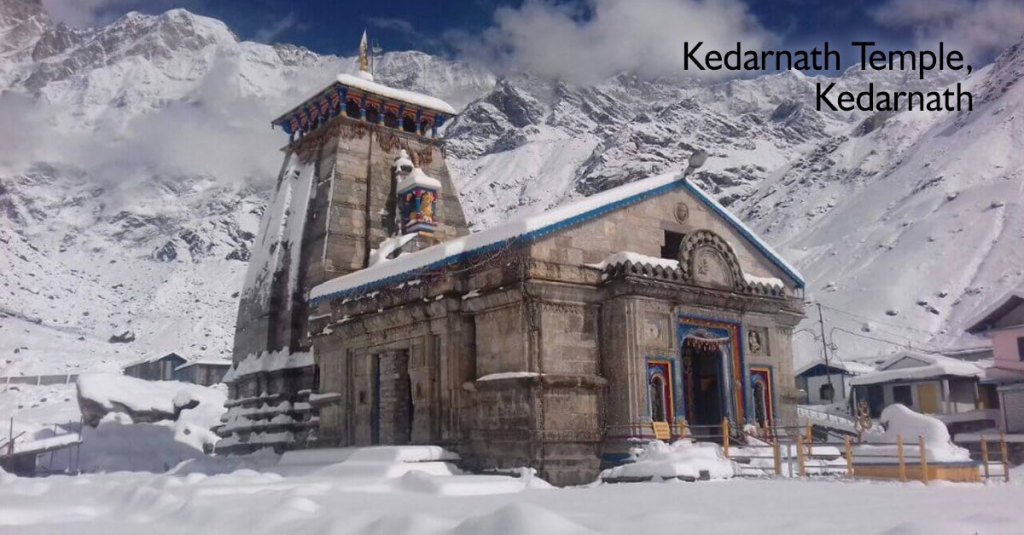 Kedarnath is one of the most revered pilgrimage sites among the Hindus. It is the highest among the 12 jyotirlingams. According to mythology, after the battle of Kurukshetra, the Pandavas wanted to ask for forgiveness from Shiva and wanted to meet Him. However, Shiva was reluctant and took refuge at Kedarnath. He assumed the formed of a bull and dived headlong into the ground, with His hump as the only visible portion. The head of the bull appeared at present-day Nepal’s Pashupatinath Temple. One of the best ways to reach Kedarnath is from Rishikesh. You can even put up at an RCI-affiliated resort at Rishikesh and then take a taxi or a bus to reach Kedarnath.
Kedarnath is one of the most revered pilgrimage sites among the Hindus. It is the highest among the 12 jyotirlingams. According to mythology, after the battle of Kurukshetra, the Pandavas wanted to ask for forgiveness from Shiva and wanted to meet Him. However, Shiva was reluctant and took refuge at Kedarnath. He assumed the formed of a bull and dived headlong into the ground, with His hump as the only visible portion. The head of the bull appeared at present-day Nepal’s Pashupatinath Temple. One of the best ways to reach Kedarnath is from Rishikesh. You can even put up at an RCI-affiliated resort at Rishikesh and then take a taxi or a bus to reach Kedarnath.
India is a land of mythologies and legends, of temples and shrines, of pilgrimage sights and devout devotees. If you wish to explore all the beautiful places that the country has, become a Krishnabhumi Holydays member. With a Holydays membership, you will always have a home in any part of India and the world.
Radhe Radhe!
